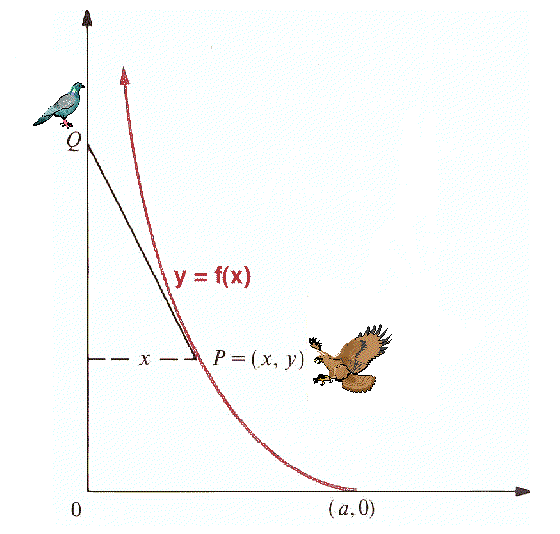Suppose that a hawk, whose initial position is
on the -axis, spots a pigeon at on the -axis.
Suppose that the pigeon flies at a constant speed of 10 ft/sec in
the direction of the -axis (oblivious to the hawk), while
the hawk flies at a constant speed of 20 ft/sec, always in the
direction of the pigeon.
The problem is to find an equation for the flight path of the
hawk (the curve of pursuit) and to find the time and place where
the hawk will catch the pigeon. Assume that in this problem all
distances are measured in feet and all times measured in seconds.
Leave out all dimensions from your answers.

Consider the diagram above (click on it for a better view)
which represents the situation at an arbitrary
time during the pursuit. The points and represent
the positions of the hawk and pigeon respectively at that time instant
, with representing the flight path of the hawk.
The pigeon's position is given by the following function of time
=
The fact that the hawk is always headed in the direction of the pigeon
means that the line is tangent to the pursuit curve .
This tells us that where
=
(Your answer must involve the three variables , , and .)
If we solve the equation
where , for time we obtain that
where
=
(Your answer must involve the three variables , , and , where
stands for . )
You can earn partial credit on this problem.